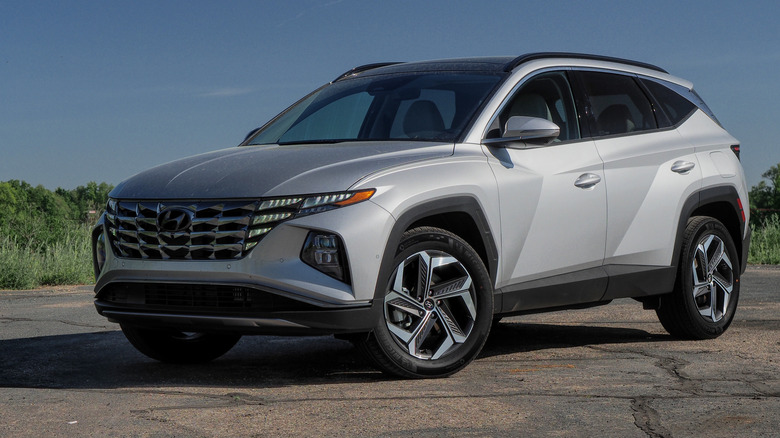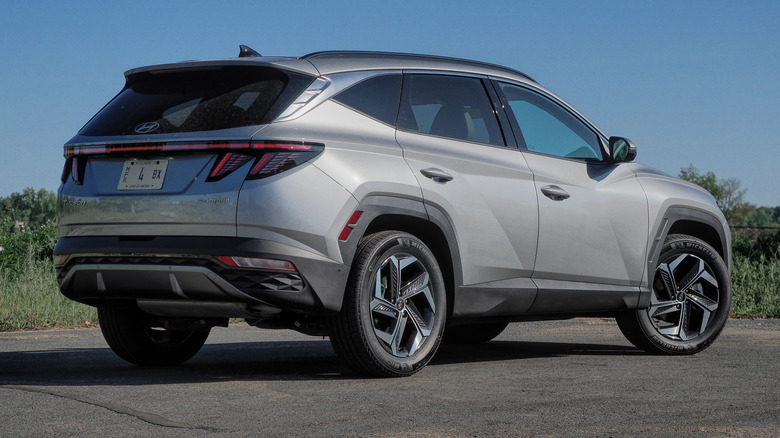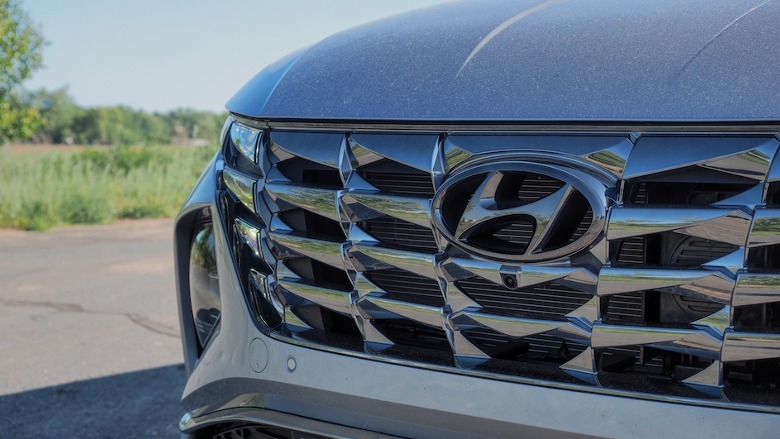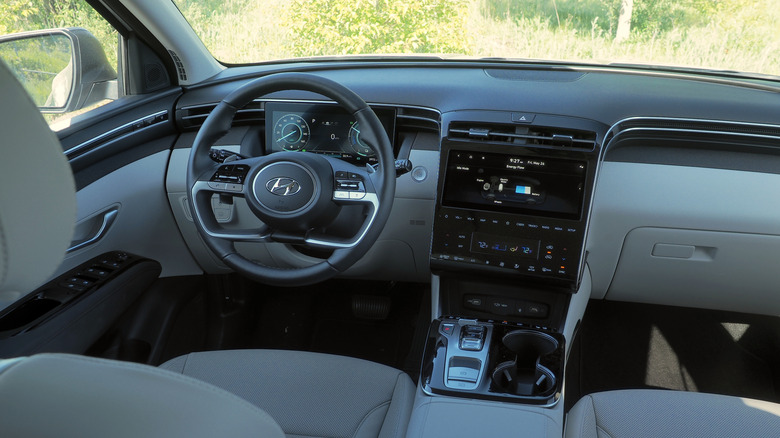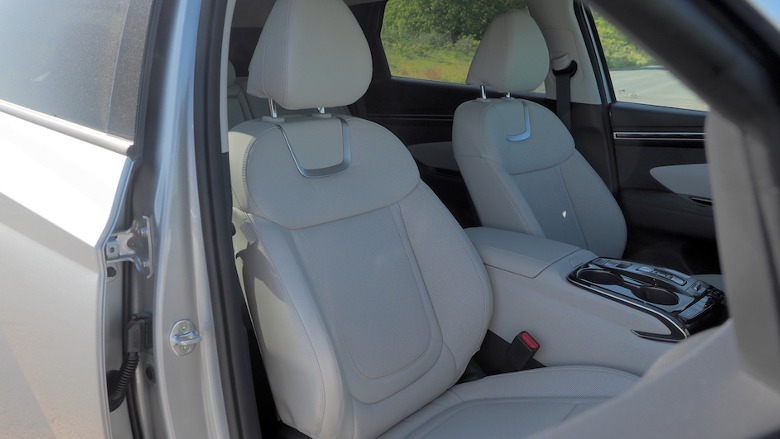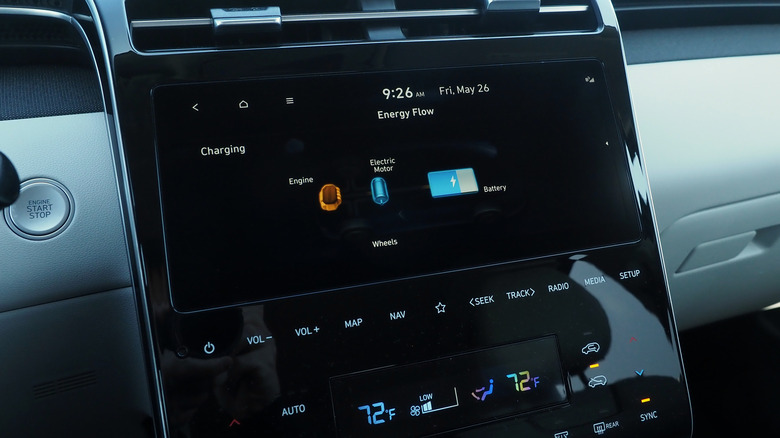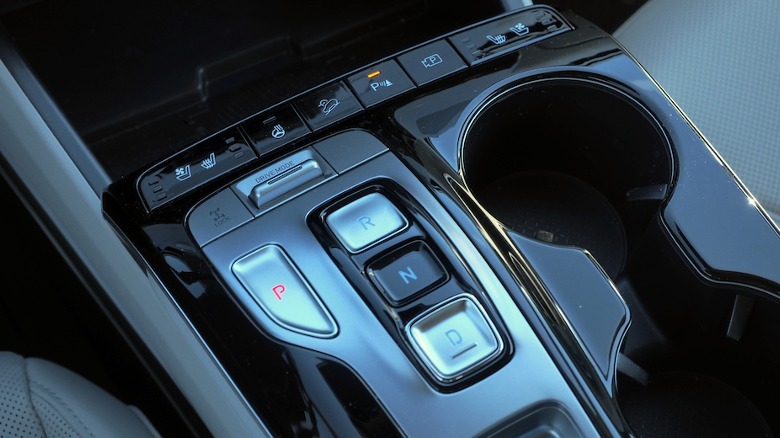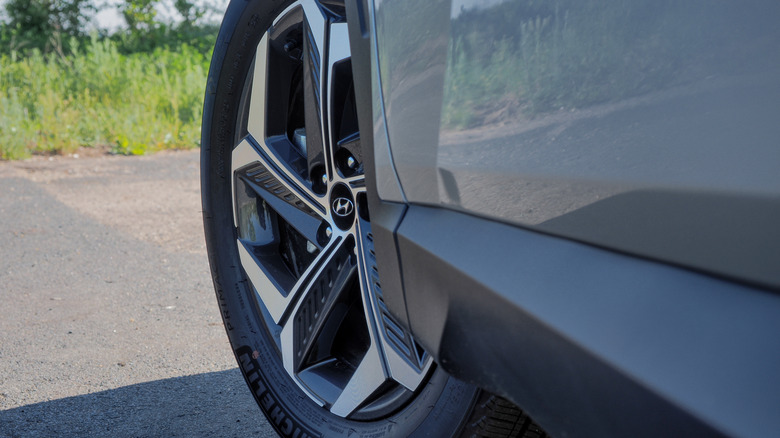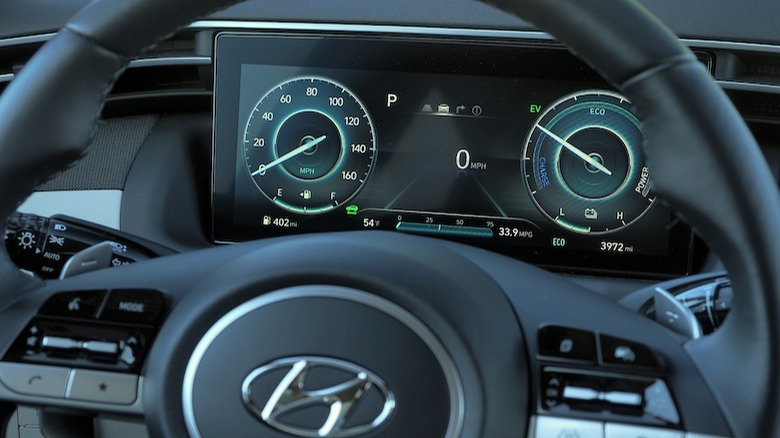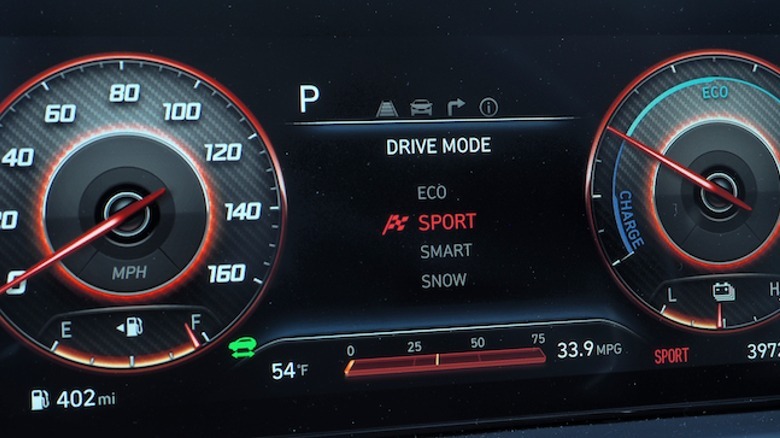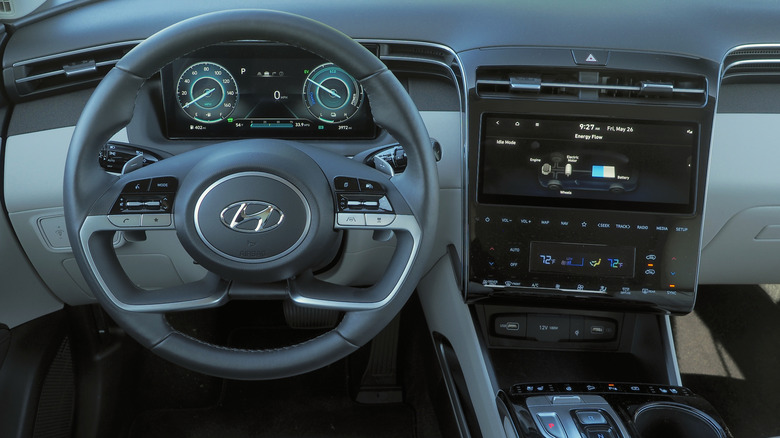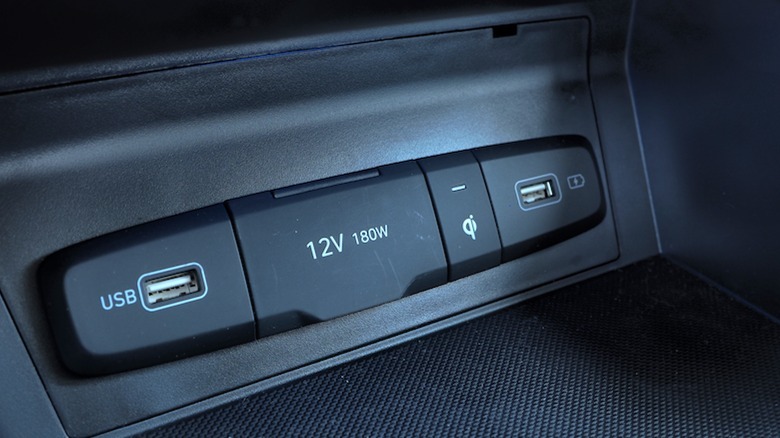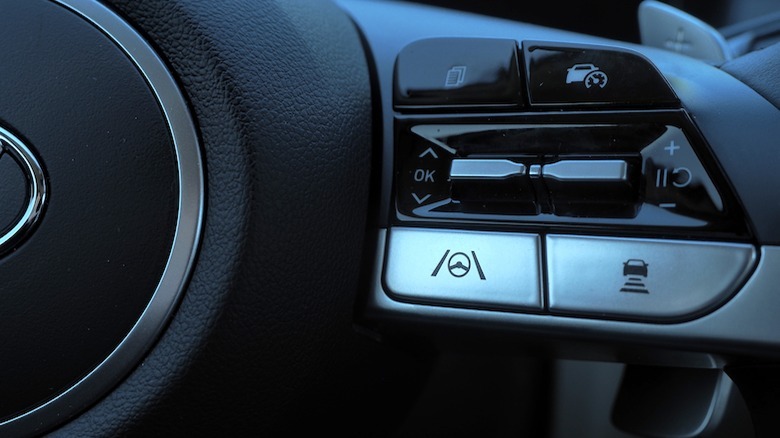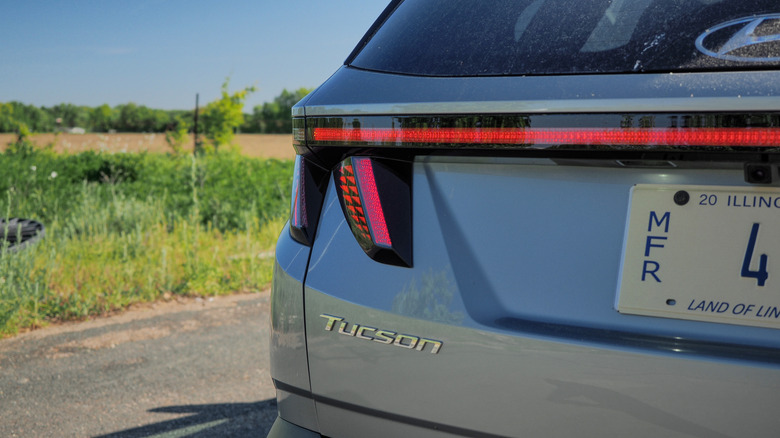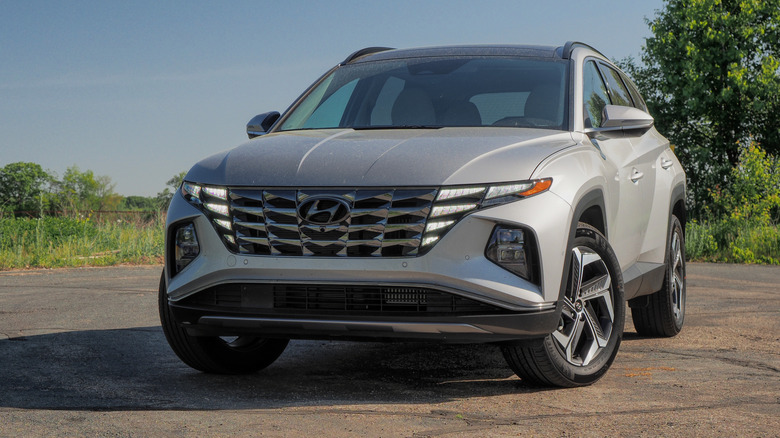2023 Hyundai Tucson Hybrid Review: Electrification Without The Headaches
- Practical and capacious
- Mild-hybrid engine is smooth and economical
- Solid levels of standard equipment
- Dashboard controls take some getting used to
- Doesn't encourage eager driving
There's something to be said for an easy life, especially when you're talking about a family SUV that needs to be flexible. Electrification may be the future of driving, but while a full EV suits some drivers, not everybody is ready — or has the charging facilities — to give up gas altogether. The 2023 Hyundai Tucson Hybrid is designed for just that audience, packaging up improvements in fuel economy without demanding the behavioral changes that still put many would-be owners off EVs.
Hybrids aren't new, but there are still plenty of ways to combine internal combustion and electrification — and plenty of confusion around just how that works. In the case of so-called mild hybrids like this one, the electric motor generally plays second fiddle to the gas engine, though that's not to say its bit-role is unimpressive. Instead, like the best supporting actors, the Tucson Hybrid's greener tech makes for a far more convincing production all-round.
A middle ground in electrification
2023 Tucson Hybrid ownership starts at $31,350 (plus destination) for the Blue trim, or a $4,450 premium over the cheapest gas-only Tucson (though it's worth noting that the equipment levels aren't the same in that case). The mid-tier SEL Convenience trim is $34,310, while the top-level Limited trim you see here is $39,110 (both plus destination).
As is the case elsewhere in Hyundai's range, the "Blue" model is slightly more economical. The Tucson Hybrid Blue is rated for 38 mpg on all three EPA test cycles: city, highway, and combined. The better-equipped SEL Convenience and Limited trims are both rated for 37 mpg in the city, 36 mpg on the highway, and 37 mpg combined.
Nonetheless, it's a big step up from the gas-only Tucson which, in all-wheel drive form to match the hybrid, is rated for 23 mpg in the city, 28 mpg on the highway, and 25 mpg combined. That difference adds up, too: according to the EPA, not only will the Tucson Hybrid go almost 150 miles further on a full tank of gas, you'll save $2,250 in gas costs over five years, compared to the average new vehicle. The non-hybrid SUV will cost $1,000 more in fuel over the same five-year period, compared to the average new vehicle.
Handsome, sober, and unchallenging
Hyundai's internal combustion models haven't quite embraced the retro-futuristic design language of its EVs, such as the Ioniq 5, though that doesn't mean the Tucson is ugly. 19-inch wheels come standard on the SEL Convenience and Limited trims (the Blue makes do with 17-inchers), and this top-level model gets projector-type LED headlamps and a dark chrome finish grille through which Hyundai's daytime running lamps glow pleasingly. Rear privacy glass is standard, too, along with roof rails and a hands-free power liftgate across the board.
Inside, it's a fairly sober place to find yourself. Where Hyundai's full EVs try to feel lounge-like, the Tucson is a lot less memorable. Its materials are solid, and its seat fabrics feel sturdy enough to live up to the rigors of the modern family, but it's not going to win any awards for inspired design.
A choice of either black or gray cabin color schemes is part of the problem, there. However Hyundai's biggest dashboard crime — all those acres of fingerprint-loving, smudge-gathering piano black plastic aside — is the relative anonymity of its buttons.
Please, Hyundai give me some buttons
Don't get me wrong; persistent controls are a good thing. I don't want to have to go digging through infotainment touchscreen menus in order to find the essentials. The Tucson's strip of touch-sensitive keys under said touchscreen isn't quite filling me with joy, though.
There are buttons for adjusting volume and media, and jumping between different sections of the infotainment. Below that there are keys for the HVAC settings. Good luck, frankly, locating them precisely enough to activate the one you wanted, without looking away from the road.
Weirdly, Hyundai then switches to physical buttons for the heated and ventilated seats, the heated steering wheel, and various parking systems that come on this Limited trim. The PRNDL is a simple layout of nicely-sized buttons; the drive mode selector is a readily waggled switch. The Tucson has a fulsome number of steering wheel controls, but even they're straightforward to understand. It feels as though two groups of designers each worked on different chunks of the dashboard.
A smooth taste of mild-hybridization
Happily the Tucson Hybrid's gas and electric aspects of the drivetrain seem to have been designed in the same room. On the one hand, there's a 1.6-liter turbocharged four-cylinder gas engine, with 180 horsepower and 195 lb-ft of torque. That's combined with a 59 horsepower electric motor, which brings 195 lb-ft of torque to the party, and a small 1.49 kWh battery.
Throw in a six-speed automatic, Hyundai's HTRAC all-wheel drive as standard, and a total of 226 system horsepower, and you have a solid mild-hybrid setup. There's no support for external charging, but the Tucson Hybrid uses energy generated during braking and excess power from the engine to charge up its battery. That's then used to add a little extra pep during acceleration.
The result is just fine as a daily runabout. Even in Sport mode, nobody is going to mistake the Tucson Hybrid for anything other than an affordable crossover. Neither, though, are you likely to be disappointed, and the same goes for practicality. The trunk is 38.7 cu-ft with the rear seats up; drop them down, that expands to 74.5 cu-ft. The Tucson Hybrid will tow up to 2,000 pounds, assuming you've got trailer brakes.
Plenty of toys
Every Tucson Hybrid comes with a healthy amount of toys. Heated front seats are standard, as is SiriusXM, Hyundai's BlueLink connected car services, a wireless phone charger, front and rear USB ports, dual-zone climate control, a power liftgate, Hyundai Digital Key, and two 12V outlets. Forward collision avoidance assistance with pedestrian and cyclist detection, and junction turning detection is standard, along with blind spot warnings and collision avoidance, driver attention warnings, lane-keeping assistance and lane-following assistance, rear cross-traffic collision-avoidance assistance, and adaptive cruise control.
SEL Convenience trim upgrades the center touchscreen from 8-inches to 10.25-inches and throws in navigation, though — a weirdness we've seen elsewhere in Hyundai's line-up — the Apple CarPlay and Android Auto support goes from wireless to wired in the process. There's a 10.25-inch fully digital gauge cluster, too, plus a leather steering wheel, auto-dimming mirror, 64-color ambient lighting, and front/rear parking sensors, along with Hyundai's remote smart parking assist.
Limited trim pushes things even further, as you'd expect. As well as leather seats — unlike cloth on the Blue, and H-Tex on the SEL Convenience — there's power adjustment for the front passenger, ventilated front seats, heated rear seats, a Bose audio system, heated steering wheel, and rain-sensing wipers. It's the only version of the Tucson Hybrid with Highway Driving Assist (HDA), too, Hyundai's capable hands-on driver-assistance system.
Easy to live with
One of the things that makes the Tucson Hybrid so appealing — like with most mild hybrids, indeed — is that its electrification doesn't demand any real compromises or accommodations. You don't need to plug the electrified SUV in; there's no real difference, day to day, in the driving experience, bar perkier acceleration from a standing start or at low speed. There is, in fact, a solid argument to be made that all internal combustion cars should be mild hybrids at this point.
If you can swing a charger, though, Hyundai does have the Tucson Plug-in Hybrid. It's more expensive, and more powerful than the mild hybrid version, starting at $37,300 plus destination. In part that pays for a bigger battery and a more punchy e-motor, with 33 miles of EPA range on electric power alone. Though it can tow the same as the Tucson Hybrid, trunk space is down 7-8 cu-ft because of the larger battery pack.
2023 Hyundai Tucson Hybrid Verdict
There's something to be said for predictability and the familiar. One day, hopefully sooner rather than later, we'll have our pick of electric vehicles in a variety of sizes, shapes, and capability levels. They'll be affordable enough for the average American driver, and those drivers will have the facilities to recharge, either at home or at speedy, reliable public fast chargers. Unfortunately, that's not the world we live in quite yet.
No, an electrified SUV like the 2023 Tucson Hybrid isn't going to ween us entirely off our collective gasoline addiction. Nonetheless, its greater efficiency compared to Hyundai's combustion-only versions will eventually pay dividends both environmentally and in what you pay at the pump. Throw in Hyundai's healthy warranty — 5 years/60,000 miles of standard warranty, 10 years/100,000 miles of powertrain coverage, 5 years/unlimited miles of 24/7 roadside assistance, and 10 years/100,000 miles of hybrid battery coverage — and the appeal of this sensible SUV starts to become even clearer.
After all, while there's undoubtedly a market for SUVs that masquerade as sports cars, SUVs that challenge design conventions, and SUVs that think they're luxury cars, there's also a market for solid economy without too much in the way of compromise. You might find yourself wishing Hyundai had added some actual buttons to the Tucson Hybrid's dashboard, but you can't really fault this electrified SUV for being pitch-perfect for the family mainstream.
